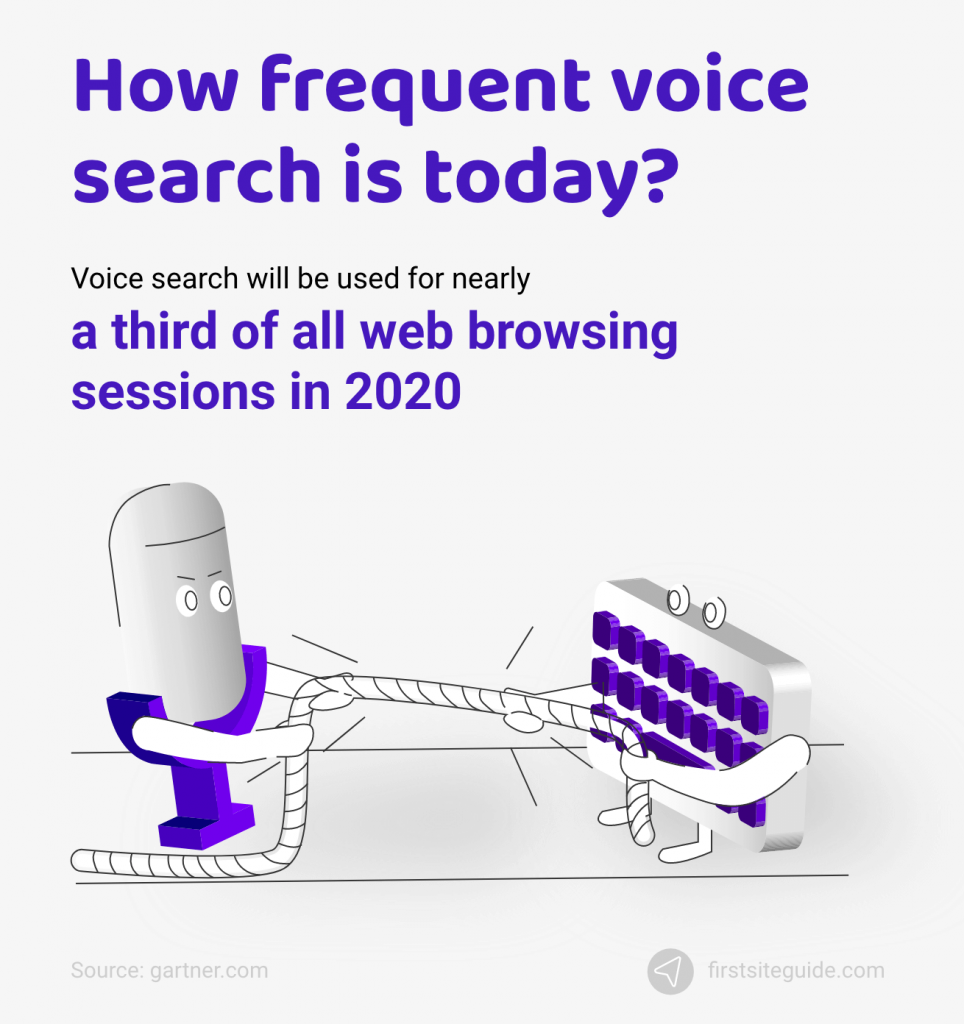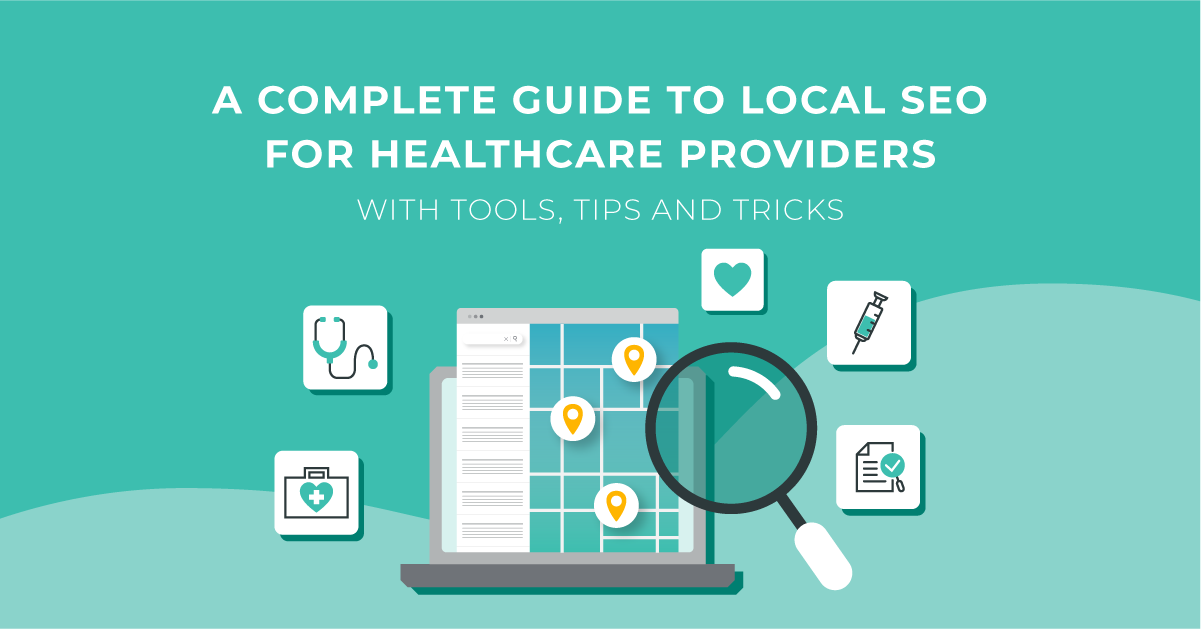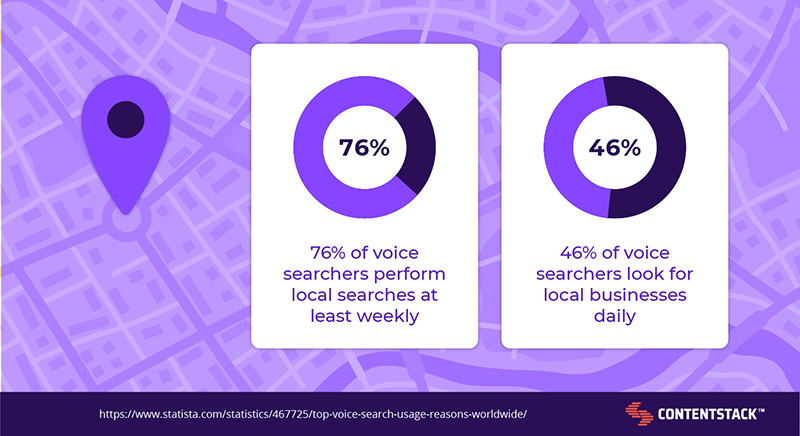Imagine two companies competing for the same customers.
Let’s call them Store A and Store B.
They are the same except for one thing: Store A has a location that 7 out of 10 customers can easily access.
Which company will do more business?
You don’t need an MBA to figure this out – store A offers more convenience and will therefore gain more market share.
Now consider one benefit you can add to your website that will have a similar effect: voice search.
According to Statista, there will be 8 billion voice assistants in use worldwide by 2024.
That’s a lot of people talking into their phones or smart speakers.
And if you’re not optimizing your web content to take this into account, you’re leaving a lot of opportunity on the table.
Why are so many people using this feature? Why is it important for search engine optimization? And more importantly, how do you claim your share?
Read on for answers to these and other questions.
How Popular Is Voice Search?
Contents [hide]
- 1 How Popular Is Voice Search?
- 2 Voice Search Improves Accessibility
- 3 Voice Search UX Outcomes For Users
- 4 Prioritize Your Voice Search Efforts By Channel And Audience
- 5 Optimizing Your Content For Voice Search
- 6 Voice Search Is Only Going To Grow
- 7 What is voice engine optimization?
- 8 What digital strategies do marketers now need to consider for voice search?
- 9 How do I implement voice search on my website?
- 10 How is voice search used in marketing?
- 11 How many types of SEO are there?

We’ve already established how many people prefer using voice search capabilities on their devices, but let’s take a look at some other relevant statistics to see how important it is to capitalize on this trend:
As you can see, the use of smart speaker and voice assistant is gaining popularity in the search traffic competition and it is expected to continue to grow.
But we haven’t mentioned two key things yet – accessibility and UX (user experience).
Voice Search Improves Accessibility

The US Department of Justice has been clear: the websites fall under the Americans with Disabilities Act (ADA).
And not complying can cost you more than potential traffic—you can be fined as much as $75,000 for a first offense.
Voice search plays an important role in ensuring that your website is accessible to everyone.
This includes those with physical limitations that limit their ability to use a keyboard and mouse, those with repetitive stress injuries who must limit their time using keyboards and mice, and people with cognitive disabilities who prefer voice search.
Much of this functionality depends on speech recognition technology, but you may not realize that the way your website is coded can also have a big impact.
According to the Web Accessibility Initiative (WAI), there are several best practices your website should follow to ensure accessibility, including reading order that matches code order, using alt tags for images, and adding download tags meaning and context.
For a complete list of WAI recommendations and information on how to implement them, click here.
Voice Search UX Outcomes For Users

The link between a good user interface and improved search engine results has been well demonstrated. The growth of voice search, however, means that designing your UX around voice interaction is becoming increasingly important.
How your brand interacts with different devices that support voice search can have a significant impact on whether users have a positive or negative experience.
But before you do that, you need to understand how people use voice search.
One of its main uses is informational.
Let’s say you’re deep in pasta dough making tortellini while a red sauce simmers in a pot on the stove.
You can’t remember how long the sauce is supposed to take, so without taking the time to wash and dry your hands, you call out to your smart speaker, “Hey Google, how long should the tomato sauce cook?”
Or you’re hanging out with your friends when one of your friends refuses to believe that Willie Mays ever played for the Mets.
A quick voice search can help you show off your superior baseball skills again.
In addition to settling disputes, many people also use it to check the news and weather.
Another common use is to search “near me”.
For example, you are on a trip to a country you have never been to before. Your car is running on fumes and you need to find a gas station as soon as possible.
Without taking your eyes off the road, voice search can direct you to the nearest place to fill up.
And of course, there’s voice shopping, which we briefly mentioned earlier.
From making shopping lists to ordering pizza to purchasing products using just voice, more and more people are starting and finishing purchases without ever looking at a screen.
The uses of voice search are growing along with the growing popularity.
So, that begs the question: how do you get into it?
Prioritize Your Voice Search Efforts By Channel And Audience

When developing your voice SEO strategy, you need to understand the capabilities and limitations of the platform you’re planning for. There are two approaches here:
Each of these offers different powers.
Devices that display the first screen (when the screen is in use) offer an efficient outlet for information.
Visual scanning is faster than listening and can be used to convey more information in less time. As the saying goes, a picture is worth a thousand words.
Voice-first devices, on the other hand, provide efficient input.
Users can issue commands quickly and easily on their own terms.
Of course, this depends on the device understanding natural language, a technology that has greatly improved since voice commands were in their infancy.
Depending on the content of your site, the demographics of your users, and a host of other factors, your users may be more inclined to prefer one type of device over another.
You also need to understand at what stage of the buyer’s journey voice search is used.
More people use voice assistants to research products than to make a purchase, with 44.4% of US consumers using them to browse for new products and only 24.2% using them to complete a purchase.
Most of these purchases are small items that don’t need to be looked at, like toilet paper or dog food.
Consider all these factors, then tailor your voice strategy to your audience and channel.
Once you’ve done that, it’s time to get down to optimizing your content.
Optimizing Your Content For Voice Search

If you don’t have much experience designing vocal user experiences or VUIs (vocal user interfaces), don’t worry – this is a fairly new field.
Although these differ from GUIs (Graphical User Interfaces), the principles of UX/UI still apply, as does the effect of user experience on your search rankings.
Here are some important elements to consider when designing your VUI or converting existing content to optimize it for voice search:
Start With A Plan
Instead of phasing in VUI and/or voice search optimization, spend time developing a flowchart that explains how voice search users will navigate your site.
Planning ahead will save you a lot of headaches, hassles and duplicate work on the back end.
Make Interaction Natural
Voice search engines use natural language to search for things, often using multiple words.
While a searcher on a desktop might type in [chinese delivery near me], someone using voice search is more likely to say, “Where’s a good chinese delivery near me?”
The same long-tail keywords that are used for normal SEO purposes will come into play in voice search.
Try to use full phrases and queries that are even better than long-tail keywords. And make sure you’re always thinking about user intent.
Design For Flow
We mentioned earlier how your HTML, CSS, and other code should be structured the same way someone would read your website, telling the same story in voice search.
You should also use this sequential approach to structure your content.
Make sure the content follows a logical flow.
Create verbal tags that can be easily navigated with just your voice (eg “choose option #2”).
This is where your regular SEO efforts can pay off for voice SEO.
Voice search almost always selects the first search result to answer the query.
Therefore, it is crucial that your website is fully optimized for normal search.
Check your backlinks, boost your keywords, improve your local search, and do all the other SEO tasks that come with it, all while reaping the rewards of voice search.
Grab Featured Snippets
The featured snippets aren’t just great for mobile and desktop searches—they’re also used to respond to voice search results.
In fact, 60% of all voice search responses come from featured snippets.
So if your content requires this valuable query real estate, you’ll receive the lion’s share of voice traffic.
Get Local
Since so many voice searchers are looking for local answers, your content needs to be optimized for that.
If you haven’t already, get ranked on Google Local.
If you’re already there, work to improve your results.
The goal is to be the answer when someone searches Google and answers queries like [Where can I get a dress altered near me?]
Voice Search Is Only Going To Grow
Some technologies shine for a few years and then fade completely – remember HD DVD?
Voice search probably won’t be one of them.
Instead, it finds new uses and an even bigger niche as technology becomes more advanced.
If anything, the keyboard and mouse model we’ve come to know and love is more likely to become obsolete, especially if Elon Musk’s futuristic Neuralink takes hold.
The most important thing in this science fiction world come to life will be the user experience.
It’s not far-fetched to imagine AI-powered search learning what we like and don’t like and providing answers tailored to our unique purpose.
The best way to ensure you’re ready for this brave new world is to leverage existing cutting-edge technologies to ensure you’re as future-ready as possible.
And that means harnessing the power of voice search.
This is the foundation upon which much of the future of search will be built, so it’s vital that you get involved.
Your targets are talking. Make sure your site is listening.
Featured image: Prostock-studio/Shutterstock
What is voice engine optimization?
Voice Engine Optimization or “VEO” is our term for Voice Search Engine Optimization. VEO is the process of optimizing your content to become the top answer in voice search. Voice search refers to word searches on devices with Google Assistant, Siri, Alexa or Cortana.
How does voice SEO work? The goal of voice search optimization is to optimize your page for answering people’s questions when they perform a verbal search. This process allows you to have a voice search device (Alexa, Siri, OkGoogle) read your page whenever a user requests information related to your page.
Why is voice search so important?
Not only does it make it easier for Google to find answers on your website for user queries, but it also makes it more likely that you’ll rank on featured snippets, which increases traffic. We see that most of the voice search results include web pages that have schema tag and structured data.
What is one of the most important things to consider for voice search?
Six essential factors to consider when optimizing for voice search
- Featured clips. If you’re not familiar with the name “featured clips,” you’ll almost certainly recognize what they look like. …
- User intent. …
- Long keywords and questions. …
- Page speed. …
- Structured data. …
- Local SEO.
What is the future of voice search?
The voice search channel is projected to be worth $40 billion by 2022. Now is the time for businesses to optimize their interfaces, platforms and websites to keep up with the evolving voice search landscape.
Why is voice search important for SEO?
For example, a typical browser search for informational content about digital marketing will likely read something like “the meaning of digital marketing,” but a voice search allows the user to ask (with less effort): “What is digital marketing?†And that is another important aspect of its impact on SEO â user context…
What is voice optimization?
Voice SEO is the optimization of keywords and key phrases for search using voice assistants. According to some SEO experts, voice SEO is necessary for websites to appear effectively in search results conducted through voice assistants.
What is voice engine optimization?
Voice Engine Optimization or âVEOâ is our term for Voice Search Engine Optimization. VEO is the process of optimizing your content to become the top answer in voice search. Voice search refers to word searches on devices with Google Assistant, Siri, Alexa or Cortana.
What is voice search with example?
Broadly defined, voice search involves querying open domain keywords for any information on the Internet, such as Google Voice Search, Cortana, Siri, and Amazon Echo. Voice search is often interactive and involves multiple rounds of interaction, allowing the system to ask for clarification.
How do I optimize my voice?
6 strategies for successful voice search optimization
- Understand your type of customer and device behavior. …
- Focus on conversational keywords. …
- Create engaging, personality-driven content. …
- Provide context with a schema tag. …
- Create pages that answer frequently asked questions. …
- Think Mobile & Think Local.
How do I optimize Google voice search?
here are some tips to optimize for voice search.
- Understanding Voice Search. …
- Make your content scannable. …
- Claim your Google My Business listing. …
- Read the official user manuals. …
- Focus on long-tail keywords. …
- Create frequently asked questions (FAQ) pages. …
- Fill in your microdata.
What digital strategies do marketers now need to consider for voice search?
Understanding the key steps to optimizing for voice search
- Focus on the conversation. …
- Think like a user to create the right keywords. …
- Long keywords do the trick. …
- Prioritize the key words of the questions. …
- FAQ pages are a good idea. …
- Try to use only natural language. …
- Remember relevance at all costs.
What is Voice Search Optimization in Marketing? Voice SEO is the optimization of keywords and key phrases for search using voice assistants. According to some SEO experts, voice SEO is necessary for websites to appear effectively in search results conducted through voice assistants.
What is voice search in digital marketing?
“Voice Search is a speech recognition technology that allows users to search by saying terms out loud instead of typing them into a search box. The proliferation of smartphones and other small web-enabled mobile devices has fueled interest in voice search.â â
Why is voice search important for SEO?
Not only does it make it easier for Google to find answers on your website for user queries, but it also makes it more likely that you’ll rank on featured snippets, which increases traffic. We see that most of the voice search results include web pages that have schema tag and structured data.
What is voice search used for?
Voice search is a technology that allows a user to use a voice command to search the Internet, a website or an application. As a result of advances in speech recognition, this feature first appeared on smartphones, making it possible to replace the search bar.
How do I implement voice search on my website?
Open the Google website on a desktop computer and you’ll find a small microphone icon in the search box. Click the icon, say something and your voice is quickly transcribed into words.
How do I set up voice search on my website? Adding incredibly powerful voice search capabilities to your website is easy with Voicer. Simply copy the Voicer code snippet and paste it into your website’s HTML. Once you hit “Save,” Voicer will be ready to use on your website. No coding required.
How do I make voice search in HTML?
var voice = { // (A) INITIAL SPEECH RECOGNITION sform : null, // HTML SEARCH FORM sfield : null, // HTML SEARCH FIELD sbtn : null, // HTML VOICE SEARCH BUTTON recog : null, // SPEECH RECOGNITION OBJECT init : function () { // (A1) GETTING HTML ELEMENTS voice . sfrom = document. getElementById(“search form”); voice.
How do you do voice input in HTML?
When voice input is enabled, the item will have a small microphone icon displayed to the right of the input. Clicking this icon will bring up a small tooltip showing that your voice is now being recorded. You can also start speech input by focusing an element and pressing Ctrl Shift.
How is voice search used in marketing?
Since voice searches are more conversational and natural in nature, it will prioritize the semantics of search queries. As a result, this will impact the digital marketing landscape and marketers will need to re-evaluate the keywords used in their content and overall marketing strategy.
What is the use of voice search? Voice search is a technology that allows a user to use a voice command to search the Internet, a website or an application. As a result of advances in speech recognition, this feature first appeared on smartphones, making it possible to replace the search bar.
How do consumers use voice search?
72 percent of US consumers use voice search through digital assistants. The top activities performed with voice assistants are playing music (74 percent), checking the weather (66 percent), and setting alarms and reminders (58 percent).
What kinds of searches are consumers most likely to use voice search for?
Opens in new window., the most common voice searches on smart speakers ask for music (70%) and weather (64%), followed by entertainment questions (53%), web searches (47%), news (46%) and asking for instructions (34%).
Is voice search the future marketing?
This could be proven by another statistic from Oberl, which states that 71% of consumers prefer using voice queries over typing. Therefore, the convenience of voice search for users has pushed it to the forefront of search marketing and made voice search marketing the future of digital marketing.
Is voice search declining?
The popularity of voice search is on the decline: in 2021, only 18% of respondents use voice search every week, compared to 53% in 2018. New data from Manifesto reveals that people are using voice search less than a few years ago, despite the convenience and accessibility of the benefits.
Is voice search increasing?
In the past year, 58% of consumers found local businesses using voice search. And not only is the number of voice search users growing, but the volume of voice search continues to grow, as 46% of those users will use voice search multiple times a day to find a local business.
Is voice search the future?
Since 2016 and especially in 2018, Google has been encouraging publishers to use voice search with structured data.
What is voice search in marketing?
What is Voice Search? Voice search is a type of technology that recognizes your speech so you can search for things by simply saying your search term out loud instead of typing it into the search bar. The growth of smartphones and other handheld devices has led to an increase in their use.
What is the voice marketing?
In a nutshell, voice marketing is a set of strategies and tactics used to reach target audiences using various voice devices powered by voice assistants.
What is meant by voice search?
Voice Search is a speech recognition technology that allows users to search by saying terms out loud instead of typing them into a search box. The proliferation of smartphones and other small web-enabled mobile devices has fueled interest in voice search.
How many types of SEO are there?
There are about 12 different types of SEO that help websites rank better on search engine results pages.
What are the 4 main components of SEO? Each component builds on and complements the others. The stronger the links between each of the 4 components of SEO – technical SEO, on-page SEO, off-page SEO and content – the better the results. Being aware of connections will help us better understand how to best use them effectively.
How many SEO techniques are there?
12 SEO Techniques You Must Be Using in 2022 By working on some of these SEO best practices, you’ll be able to work on improving your visibility and traffic. Let’s get started.
How many types of SEO are there?
The three types of SEO are: On-page SEO – Everything on your web pages – Blogs, Product text, Web text. Off Page SEO – Anything that happens away from your website that helps your SEO strategy – backlinks. Technical SEO â All technical things done to improve search engine rankings â indexing websites to help robots crawl.
